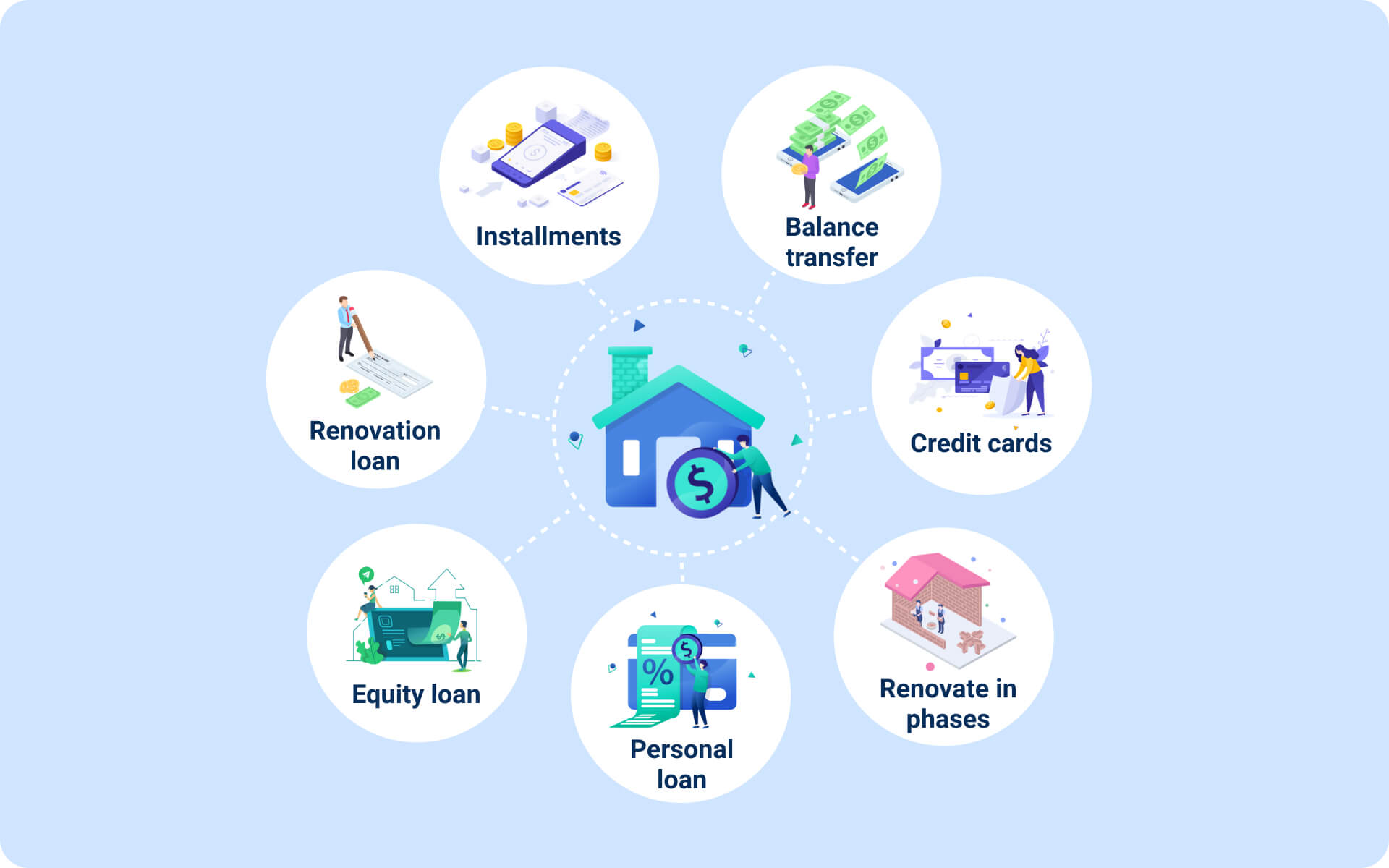Savings should always be your first option to pay for your renovation, so you incur as little debt as possible.
But if you’re short on savings and need funds urgently, use this guide to look through seven other options to fund your renovation. You can even combine options to suit your needs. Note that you can’t use CPF to fund your renovation.
If you’re unsure of how much funds you need, our budgeting guide may help (coming soon).
Renovation loan
If you need a mid to long-term loan (1 to 5 years) with relatively low interest rates, this is for you.
But note that a renovation loan’s coverage is limited to renovation works, and generally doesn’t cover things like furniture and appliances.
Check with the banks for full information on their coverage. If you’re lucky, they may allow you to use the loan for that walk-in wardrobe you’ve always wanted.
Compare the best renovation loan interest rates here.
Details
- Tenure: 1 to 5 years
- Interest: 3.5 - 4.5% P.A.
- Example: For a 3 year loan of $30k, expect to pay $1.5k to $2.1k in total interests excluding application fees (between 0 to 1% of loan amount)
- Limit: Up to $30k or 6 times of monthly salary whichever is lower
- Example: If your monthly salary is 3k, the highest loan amount is $18k
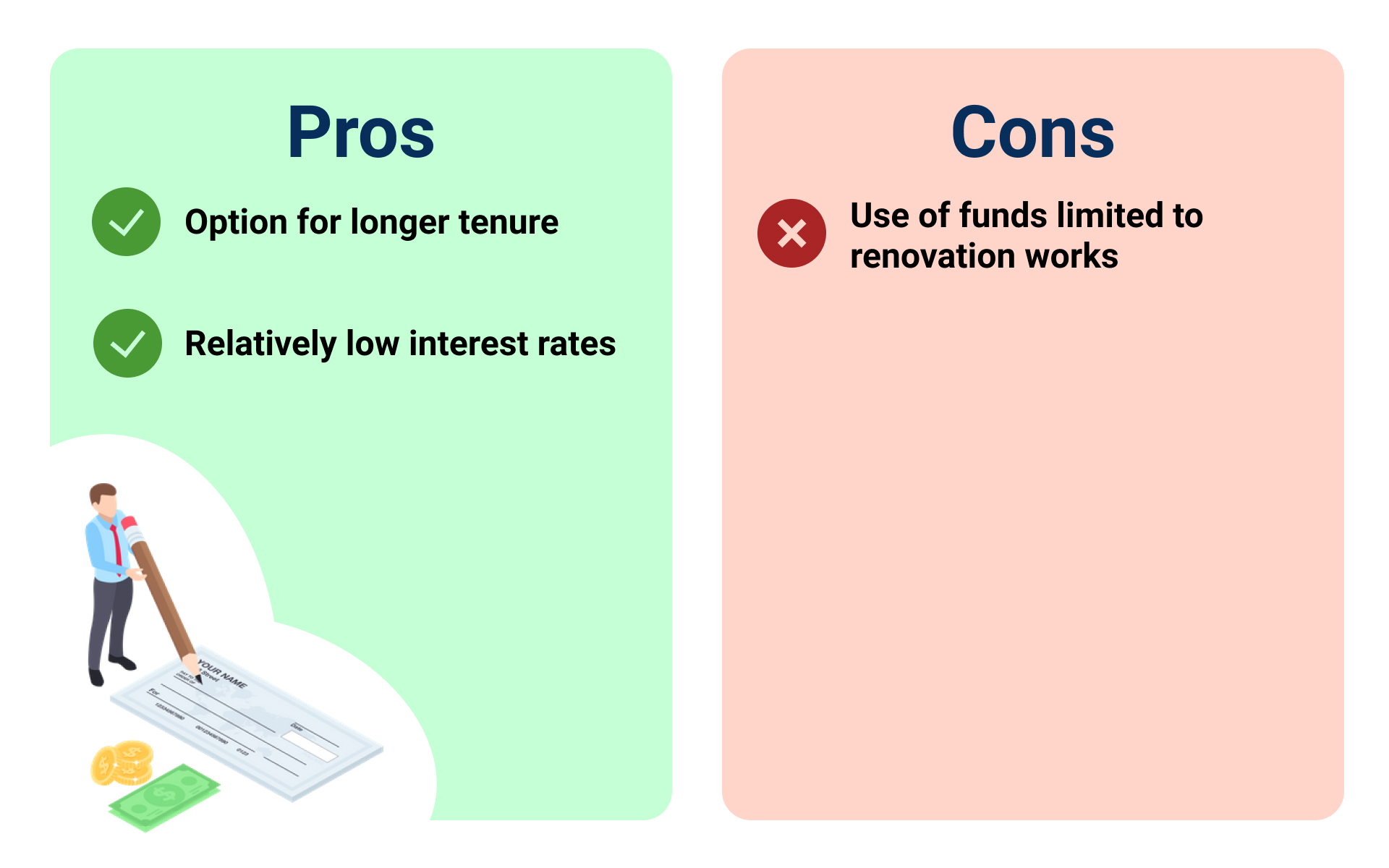
Tips
Take your renovation loan from the same bank that provided your housing loan. Most banks offer a lower interest rate.
Personal loan
Personal loans have high interest rates. So we generally don't advise that you take a personal loan.
But if you’ve already paid for your renovation and only need a small loan to fund your furnishing and decor, you could consider this option.
Compare the best personal loan interest rates here.
Details
- Tenure: 1 to 5 years
- Interest: 7 to 12% P.A. (E.I.R.)
- Example: For a 3 year loan of $30k, expect to pay $3.5k to $5.5k in total interests
- Limit: Up to $30k or six times of monthly salary whichever is lower
- Example: If your monthly salary is 3k, the highest loan amount is $18k
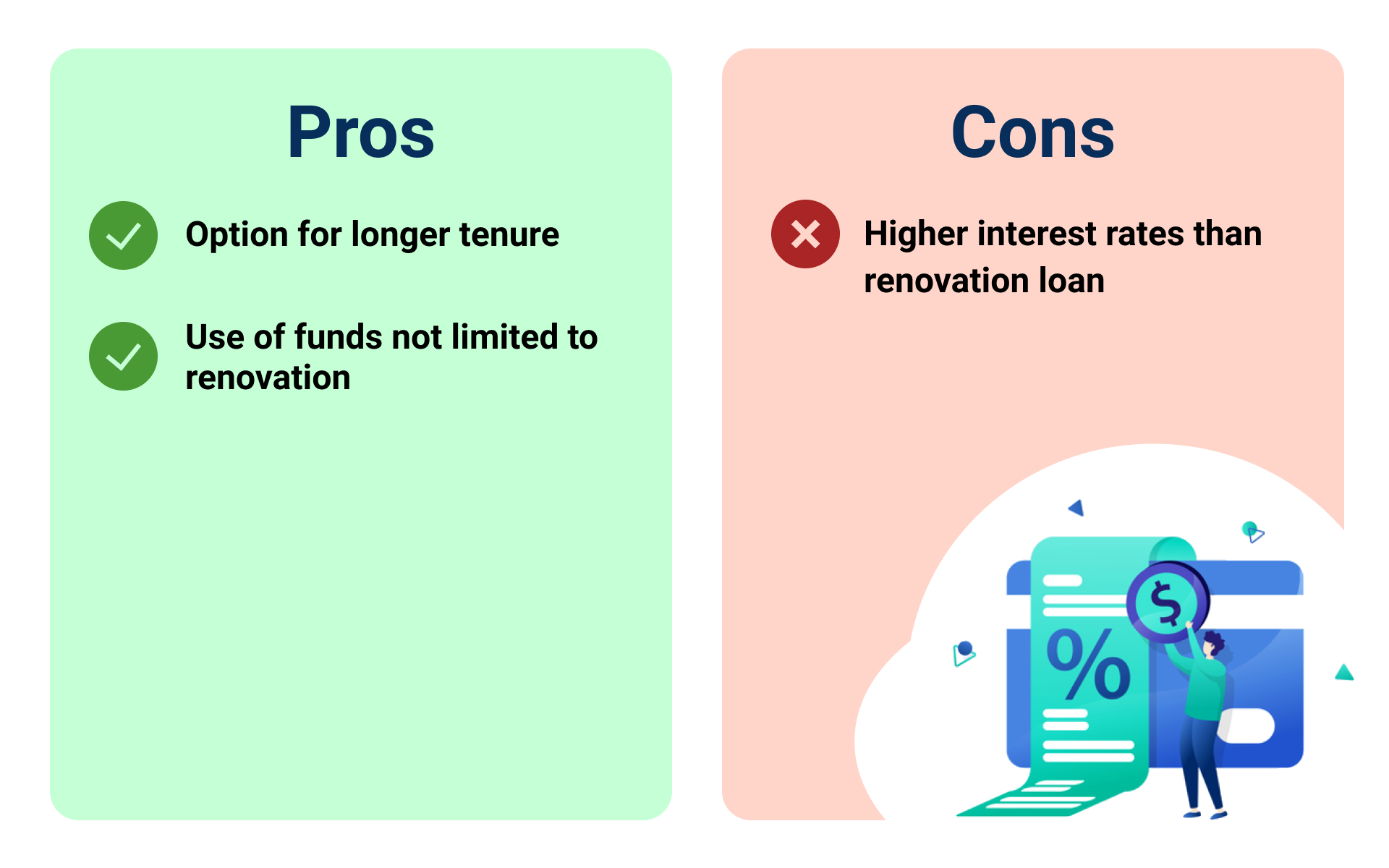
Tips
Avoid stacking a personal loan with a renovation loan. Needing multiple loans for your renovation could be a sign that your project is too big.
Installments
Some renovation providers offer no-interest installment plans. Look at Courts’ installment packages for an example.
It can be a good option as it saves time and money. No need to worry about bank charges or loan application forms.
Not every renovation provider offers this option, though. Confirm this with your renovation company before signing up.
Details
- Tenure: Depends on renovation company
- Interest: Depends on renovation company, but generally 0%
- Limit: Depends on renovation company
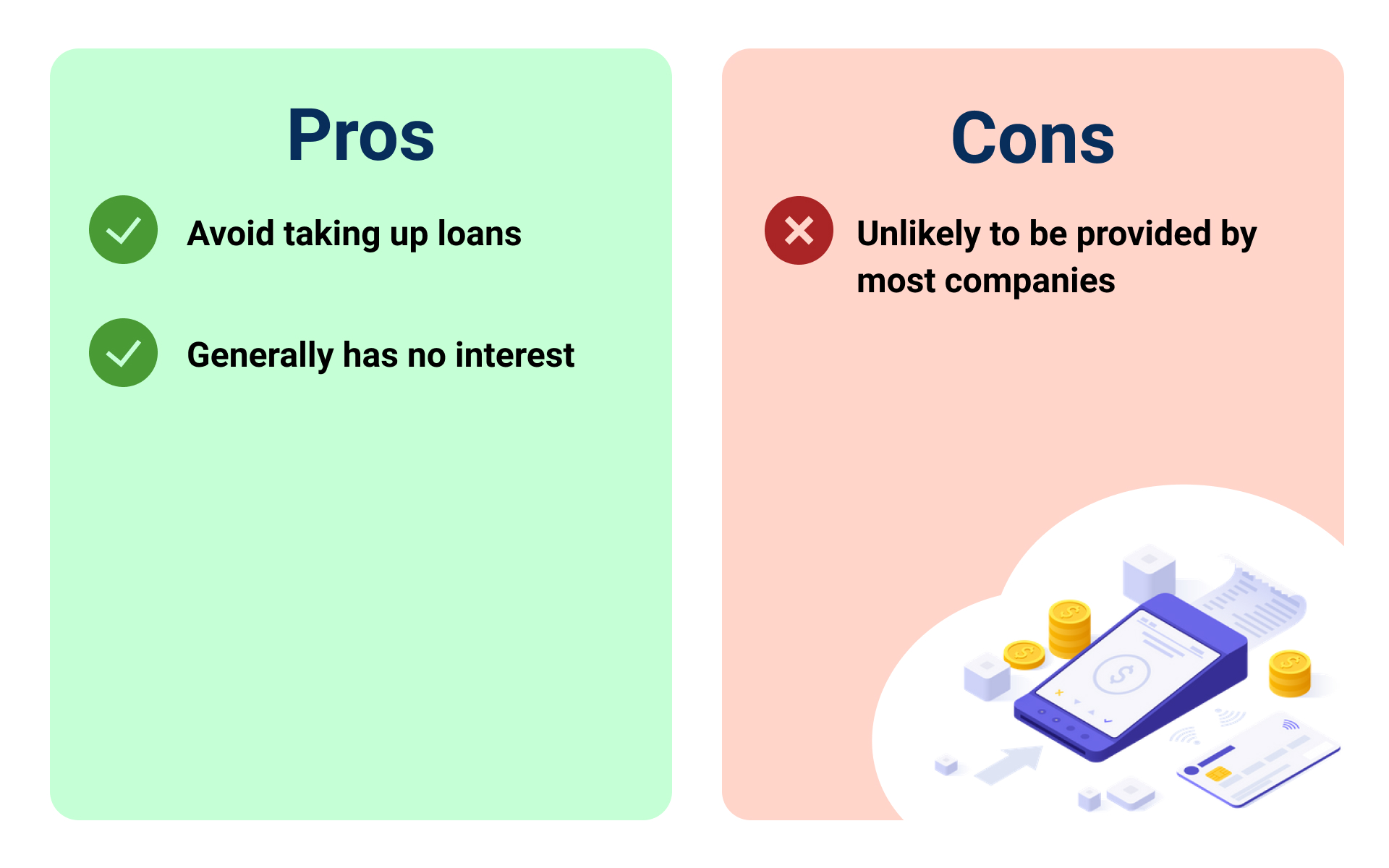
Credit cards
If you need additional cash for furniture, insurance, and appliances after you’ve paid for your main works, consider credit cards for its reward points/miles. With a Krisflyer card, a few hundred dollars of spending gets you enough miles to fly to Bangkok and back.
A word of warning: with dizzying interest rates of up to 25% per annum, don’t pay for your main works with a credit card unless you want to apply for a balance transfer (covered in the next section).
Details
- Tenure: -
- Interest: Up to 25% P.A.
- Example: For a 30k debt left unmanaged for an entire year, the total annual interest would compound to $7,500 excluding late fees and credit card fees
- Limit: Two times of annual salary if your annual salary is below 120k
- Example: If your annual salary is 40k, the limit is 80k
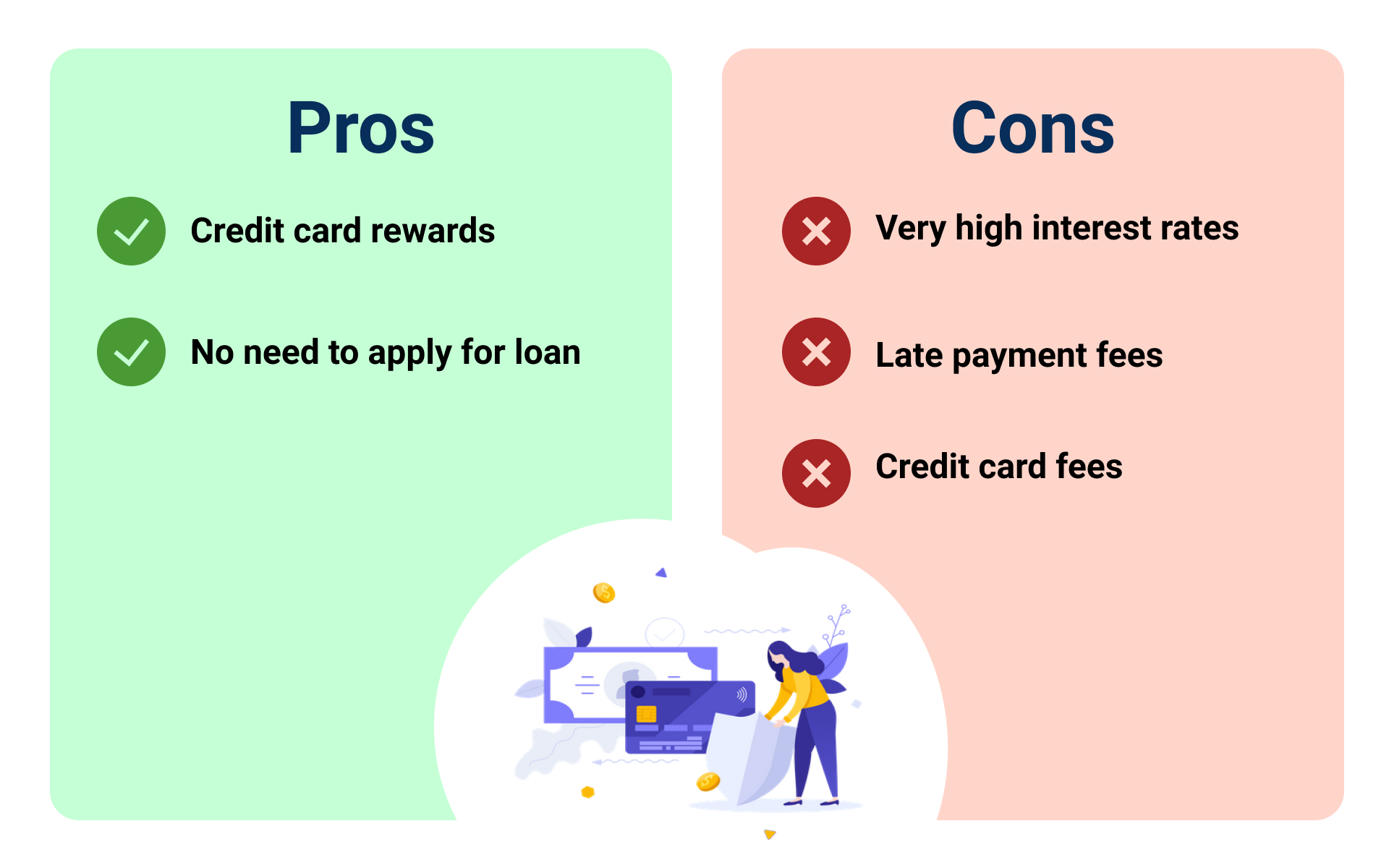
Tips
Make sure you clear credit card debts within 3 months, or you’ll face high interest charges.
Understand credit card interest and charges before using credit cards to pay for your renovation.
Balance transfer
A balance transfer a.k.a interest-free loan is a short-term cash facility that charges you no interest at all for a 3 to 12 months tenure.
But there’s a catch. The interest rate will rocket after the tenure expires and could go up to 26% per annum. So you need to be sure you can pay the entire sum by the end of tenure.
Compare the best balance transfer loans here.
Details
- Tenure: 3 to 12 months
- Interest: 0% before end of tenure, up to 26% P.A. after tenure
- Limit: No actual limit. Based on total amount of consolidated debt
- Example: Credit card 1 ($20k) + Credit card 2 ($5k) + Personal Loan ($5k) = $30k
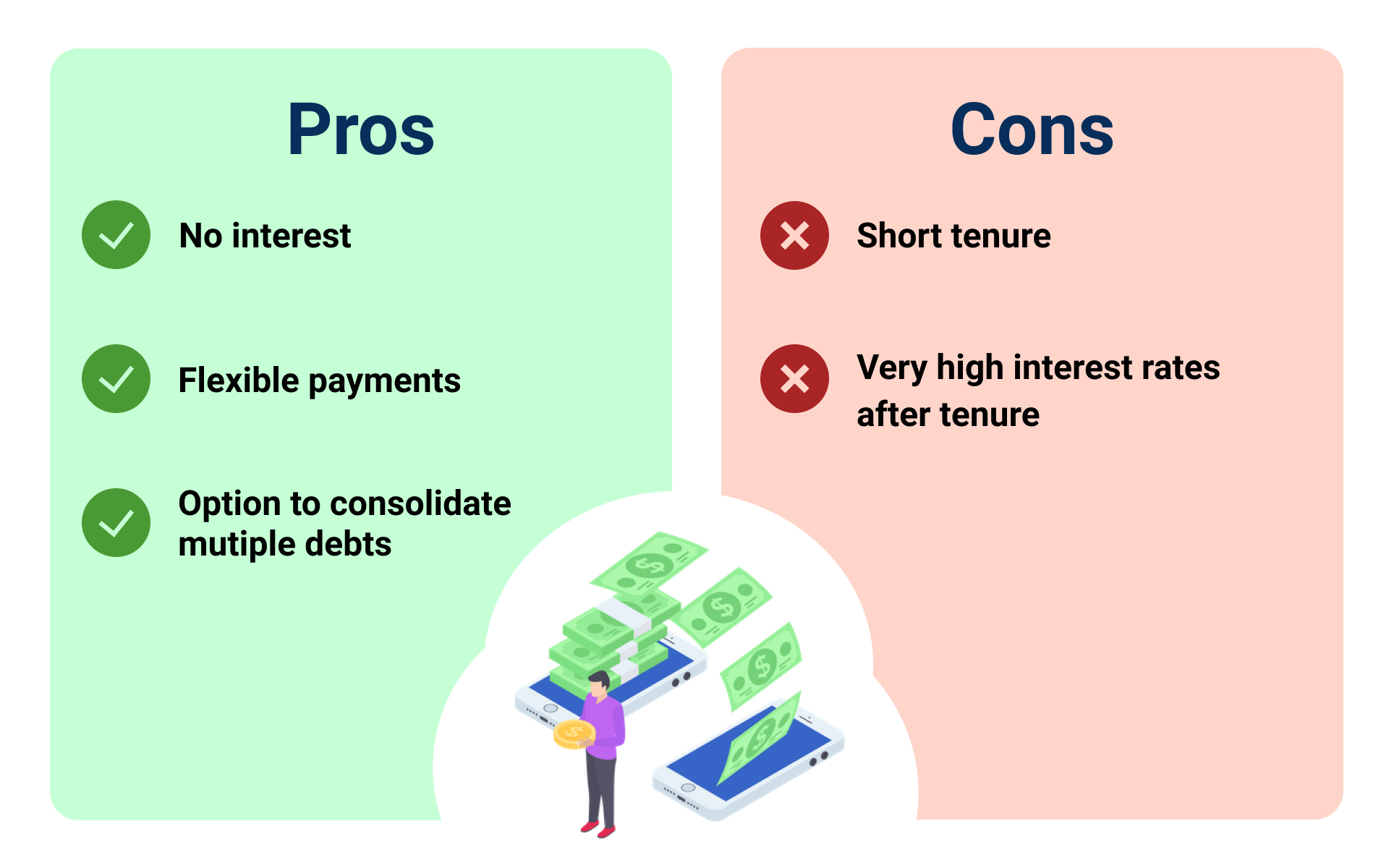
Home equity loan
A home equity loan allows you to use your private property as collateral. Banks will then issue loans based on your property’s value.
If you own a private property and need a large sum of money (above 100k), consider this option. But with such a high loan amount, your loan shouldn’t solely be for renovation.
Details
- Tenure: Maximum loan tenure = 75 years minus applicant’s current age
- Example: If you’re 50 years old, the maximum tenure will be 25 years
- Interest: 2.5% to 3% P.A.
- Limit: Up to 80% of your private property’s value minus CPF and outstanding bank loans
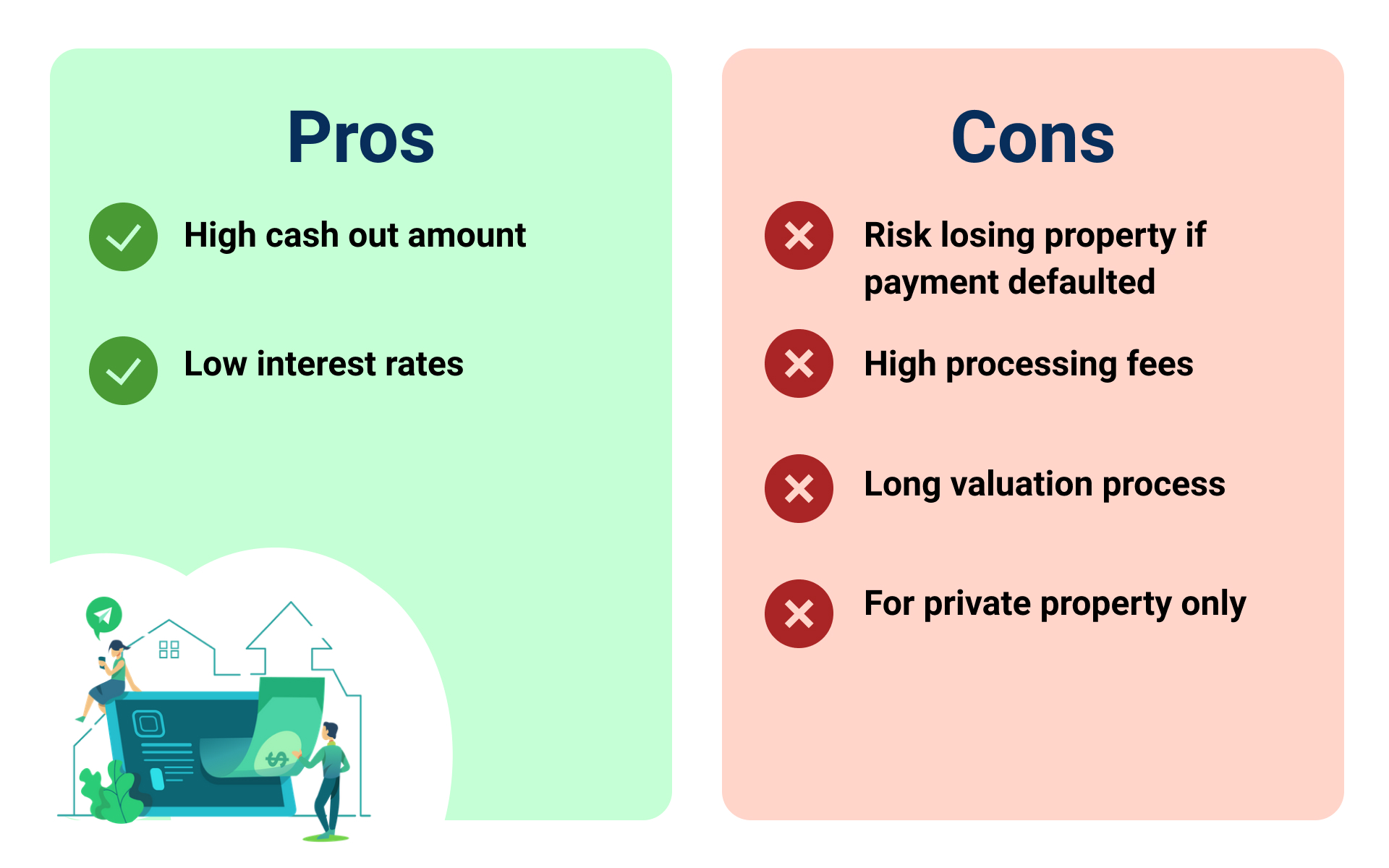
Renovate in phases
If your loan amount and current savings aren’t enough to cover your projected renovation cost, you could consider renovating your home in phases.
Yes, it’s likely you’ll end up paying more in the long run, and your home may feel incomplete for longer than you’d like. But it lets you get started with a smaller sum, giving you time to save up for the next renovation phase.
Here are three ways you can renovate in phases:
Essentials first
Prioritize essential works like hacking and tiling first, followed by flooring and plumbing as those create the most debris. Clean up, then start on the other works.
Luxuries like customized furnishing, home gym, home bar, or walk-in wardrobe can wait.
Design first, renovate later
You can pay an interior designer to conceptualize and present an ideal version of your home. Then, proceed with the actual renovation at a later date.
If you’ve engaged the interior designer for both your design and renovation, they may absorb the initial design fee for you. But, be sure to check with the company if fee absorption is applicable even if the renovation happens at a later date.
Phase by areas of your home
Phase your renovation by areas of your home only if it requires non-structural works.
To phase structural work by multiple areas means you’ll need to move out each time you renovate, which could incur high rental costs.
Things considered structural works are hacking, flooring, and tiling.
Electrical works, plumbing, polishing, painting, plastering, and carpentry can be done area-by-area as these generally won’t require you to move out.
Learn more about common work scopes (coming soon).
Summary
Now that you’ve learned how to fund your renovation, it’s time to learn how to manage your renovation.
If you have additional questions, feel free to contact us. We’d love to hear from you.

